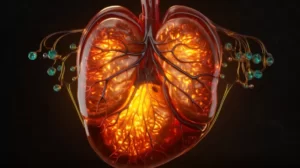If you thought chewing tobacco was a safe alternative to smoking, think again. Researchers have discovered a potent carcinogen called (S)-NNN lurking in smokeless tobacco. Previously, we knew that using smokeless tobacco heightened the risk of developing oral, esophageal, and pancreatic cancer. Now, however, scientists understand more about the chemical dangers that smokeless tobacco poses. Researchers have warned that popular brands of smokeless tobacco sold in the United States contain dangerously high levels of this carcinogen. Thus, reducing the levels of this harmful substance in all smokeless tobacco products—or eliminating it entirely—is crucial.
Smokeless tobacco comprises a variety of oral tobacco products, including snus (ground tobacco placed between the gum and lip), dissolvable tobacco pellets, and chewing tobacco. Despite health risks, approximately 8-9 million people in the United States regularly use these products. These individuals might believe they are safe because smokeless tobacco doesn’t produce the harmful compounds created when burning tobacco leaves. However, the chemicals in smokeless tobacco can be absorbed into the body through the lining of the mouth or the digestive tract, causing significant health risks.
So, what exactly is (S)-NNN, the previously mentioned powerful carcinogen? The ingestion of smokeless tobacco exposes mucous membranes in the mouth to over 25 different carcinogens. Many of these are grouped under tobacco-specific nitrosamines (TSNAs), which are formed by a chemical reaction between nicotine and nitrate. Among TSNAs, the most potent and prevalent carcinogen is (S)-NNN, and its consumption can lead directly to the formation of cancerous cells in the oral cavity, esophagus, and pancreas.
In their research, scientists assessed various smokeless tobacco products readily available in Canada and the United States. They found that Canadian products tended to have lower levels of the harmful (S)-NNN compound compared to American products. One possible reason for this difference is the different curing processes. In the United States, tobacco leaves are often fire-cured, which can produce higher levels of TSNAs. In contrast, Canadian tobacco leaves are more commonly air-cured or sun-cured.
Chewing tobacco or using other smokeless forms is not without risks. According to a study in the journal JAMA Internal Medicine, individuals who used smokeless tobacco products had significantly higher mortality rates than non-users. This risk increased by 11% for all-cause mortality, 36% for heart disease, and a staggering 176% for esophageal cancer. In another extensive study that followed over 400,000 men for over six years, scientists found that smokeless tobacco users had higher rates of death from all causes, particularly those related to circulatory and digestive diseases.
Furthermore, smokeless tobacco can lead to dental and gum problems. Chewing tobacco users are four times more likely to develop oral cancer, while those using snus are twice as likely. Additionally, smokeless tobacco users have an elevated risk of developing oral leukoplakia, which presents as white patches in the mouth that could be precancerous. Smokeless tobacco can also cause gum recession and increase the risk of tooth decay and tooth loss.
Aside from cancer risks, smokeless tobacco poses numerous short-term health problems. It can cause an increased heart rate, elevated blood pressure, and heart palpitations. Consuming smokeless tobacco can also lead to dizziness, headaches, and insomnia, as well as digestive issues like nausea and vomiting.
If you’re thinking of quitting smokeless tobacco, there is good news. After cessation, your body is capable of repairing the damage caused by using these products. Research has shown that the risk of cancer and mortality for former smokeless tobacco users approaches that of non-users. For example, ten years after quitting, the risk of oral cancer is reduced by 50%. After 20 years of being smoke-free, the risk decreases to the same level as a non-user.
So, what can you do if you’re addicted to smokeless tobacco and wish to quit? There are various support systems available. Nicotine replacement therapy (NRT) can be helpful in managing withdrawal symptoms and cravings. NRT options include nicotine gum, patches, inhalers, and lozenges. Other medications, such as Bupropion and Varenicline, may also be helpful.
Of course, quitting is often more manageable with a strong support network. There are various hotlines, support groups, text message services, and online communities that provide assistance. Lastly, for those who prefer a more personalized touch, you can consult with healthcare professionals about your specific needs and concerns.
In conclusion, the old adage “an ounce of prevention is worth a pound of cure” holds true. Choosing never to use smokeless tobacco products—or quitting if you do—can markedly reduce your risk of developing serious health issues, including cancer. The sooner you abandon the habit, the better for your overall health and well-being.



![8 Simple Rules to Refresh Your Body with a Healthy Cleanse [See Pictures]](https://naturalhealthreserve.com/wp-content/uploads/2024/01/8-rules-healthy-cleanse-slideshow-300x168.webp)